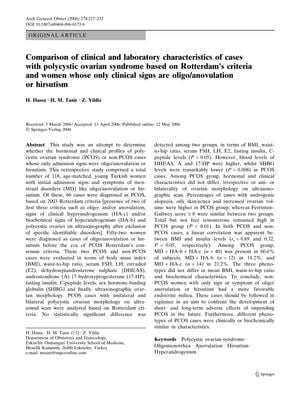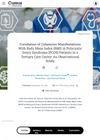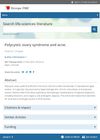Comparison of Clinical and Laboratory Characteristics of Cases with Polycystic Ovarian Syndrome Based on Rotterdam’s Criteria and Women with Only Oligo/Anovulation or Hirsutism
May 2006
in “
Archives of Gynecology and Obstetrics
”

TLDR Women with only irregular periods or excess hair have a better hormone profile than those with full PCOS, but both groups are similar, indicating a need for better PCOS diagnosis methods.
The study involved comparing 66 Turkish women diagnosed with PCOS based on the Rotterdam criteria to 52 women with only oligo/anovulation or hirsutism. It found that while there were no significant differences in BMI, waist-to-hip ratio, and several serum hormone levels between the two groups, the PCOS group had higher levels of certain androgens and lower levels of SHBG. Clinical features like androgenic alopecia, oily skin/acne, and increased ovarian volume were more common in the PCOS group, despite similar Ferriman-Gallwey scores. Both groups showed a linear correlation between BMI and insulin levels. The study concluded that women with only oligo/anovulation or hirsutism had a more favorable endocrine profile compared to those with PCOS, and that different PCOS phenotypes were clinically and biochemically similar, suggesting the need for more sophisticated diagnostic tools for PCOS sub-phenotypes.




